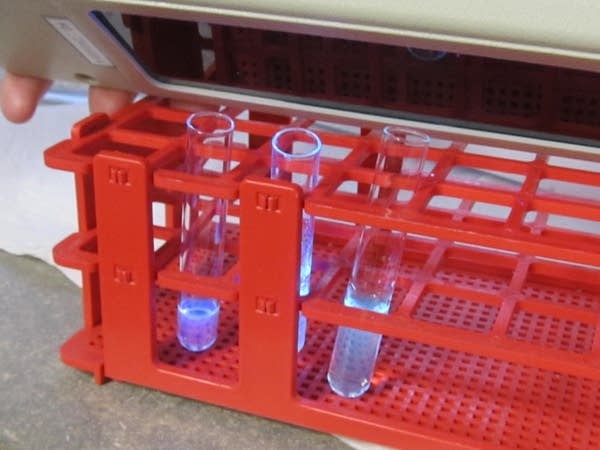Augsburg’s greener way to do chemistry

Go Deeper.
Create an account or log in to save stories.
Like this?
Thanks for liking this story! We have added it to a list of your favorite stories.

I've just been introduced to green science.
I'm in Prof. Michael Wentzel's organic chemistry class, and he's showing his students how to do chemistry in a more environmentally friendly way -- "Benign by design," as he puts it.
They're reproducing a fluorescent substance found in scorpions -- but doing it without generating all the waste that's usually produced in such chemical processes.

Wentzel uses a combination of heating and mixing to enable his components to form chemical bonds, thus avoiding the use of solvents -- and thus taking one more chemical out of the equation.
Turn Up Your Support
MPR News helps you turn down the noise and build shared understanding. Turn up your support for this public resource and keep trusted journalism accessible to all.
And to get his components to react with each other more efficiently, Wentzel uses a polymer styrene catalyst instead of the usual toxic mineral acid.
The professor tells me:
"It's how we should train scientists now. Companies want scientists that know the way to design chemistry to be more environmentally friendly. Chemistry doesn't need to be a fixer of problems. It can be a way to never have the problems in the first place."



